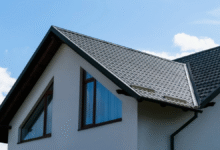Effective Strategies to Prevent Water Damage in Your Home

Post Preview
Key Takeaways
- Regular maintenance of plumbing systems is crucial to prevent leaks and water damage.
- Proper roof and gutter upkeep ensures effective water diversion away from the home.
- Installing water detection devices can provide early warnings of potential issues.
Water damage is one of the most pervasive and costly threats facing homeowners today. Unlike other household concerns, water intrusion can remain hidden for weeks or even months, slowly undermining your home’s structure, leading to mold growth, and destroying valuables or irreplaceable keepsakes. Neglecting to address even seemingly minor leaks can quickly spiral into expensive repairs, as water can cause damage to floors, walls, insulation, and even electrical systems. Staying ahead of potential problems through preventive measures is essential for maintaining the safety, comfort, and longevity of your residence. You can consult professionals like Call Pure Restore, which specializes in water damage restoration and mitigation for urgent assistance or expert advice.
Preventing water damage isn’t a one-time task, but an ongoing commitment to observing, maintaining, and upgrading your home’s most vulnerable features. This includes routinely inspecting key plumbing components, keeping an eye on water-prone areas, and responding quickly when warning signs arise. Developing a proactive mindset about household maintenance will help you avoid emergencies and ensure your living space remains safe and dry year-round. Below, this comprehensive guide outlines the essential strategies you can implement to shield your home from water damage and explains where to get trusted support if an issue does occur.
Regular Plumbing Inspections
Routine plumbing inspections form the bedrock of any water damage prevention plan. Every few months, make it a habit to examine all exposed pipes, fixtures, faucets, and pipe joints throughout your home. Check under sinks, around toilets, and behind appliances such as dishwashers and washing machines for any evidence of drips, corrosion, or mineral buildup. Even a slow drip can be the first sign of a dangerous leak deep within a wall or crawl space. Fixing these problems early, by repairing valves and gaskets or replacing old pipes and hoses, can prevent a costly flood and the need for extensive restoration.
Additionally, pay extra attention to rooms or zones that aren’t frequently used, such as utility closets, basements, attics, or crawlspaces. Water leaks left unnoticed in these areas can persist for a long time, causing moisture to seep into insulation, floorboards, and even electrical circuits. Integrate these checks into your seasonal cleaning or maintenance schedule to ensure you don’t miss any hidden threats.
Roof and Gutter Maintenance
Your roof and gutters are the frontline defenders against rain, snow, and ice. Any breach in the roofing system—like missing, cracked, or warped shingles—can allow water to enter your attic or upper floors, leading to leaks, rot, or, in severe cases, structural collapse. Schedule roof inspections at least twice a year, especially after heavy storms, and immediately address any damage you discover. For long-term protection, consider hiring a roofing professional for a thorough assessment every few years. Equally vital is the upkeep of your gutters and downspouts. Clogged or broken gutters prevent water from being diverted away from your home, causing it to pool near the foundation and creating a risk of infiltration into your basement or crawlspace. Clean gutters and downspouts at the end of each season—particularly after autumn when leaves accumulate—and install gutter guards to minimize maintenance and block debris. Ensuring your drainage system works properly reduces the risk of water damage throughout your home and helps maintain your property’s foundation.
Sealing Windows and Doors
Windows and doors, especially in older homes or those exposed to harsh weather, can be significant points of water intrusion. Inspect the frames, weatherstripping, and thresholds on a seasonal basis. Look for signs of cracked caulking, peeling paint, or soft, spongy wood, which could signal past or current water exposure. Apply new, high-quality caulking around seams and joints, and replace any damaged or missing weatherstripping to create a tight, weather-resistant seal. This step not only wards off leaks but also boosts your home’s energy efficiency and can deter pests from getting inside. In areas prone to heavy storms or flooding, consider installing storm doors or window barriers for enhanced protection. For more information on sealing openings and preparing for flood events, consult the American Red Cross Flood Safety Tips, which offer valuable insights into keeping your home secure under adverse weather conditions.
Additionally, don’t overlook window wells, especially basement windows, as they can collect water and lead to seepage if not properly drained. Ensure exterior drainage systems like gutters and downspouts direct water away from window and door perimeters. Regular maintenance and timely upgrades can prevent costly structural damage and preserve the long-term integrity of your home.
Installing Water Detection Devices
Early detection can make the difference between a minor cleanup and a major restoration project. Modern water detection devices are small, easy to install, and increasingly affordable. Place smart leak detectors or sensors near toilets, sinks, washing machines, hot water heaters, and in basements, where leaks are most likely to start and least likely to be noticed immediately. Many modern leak detectors connect to your wifi network or smart home hub, sending instant alerts to your smartphone if water is detected in high-risk zones. Prompt notification of a leak means you can react quickly, turning off the water supply and minimizing damage, even when you’re not at home. Investing in these simple gadgets adds an invaluable layer of defense, particularly for vacation homes or properties that remain vacant for extended periods.
Maintaining Proper Drainage
Proper drainage extends far beyond your roof and gutters; it includes the landscape surrounding your house. The grade of your yard should always direct water away from your foundation. Inspect the soil and slopes annually, correcting any depressions where water tends to pool. Install or maintain yard drains, catch basins, and grates, and periodically remove debris that could block water flow. Adding French drains, sump pumps, or backwater valves can provide invaluable extra protection for homes in flood-prone locations or those with persistent groundwater issues. Inadequate drainage not only compromises the structural integrity of your home but also creates ideal conditions for mold, fungus, and mildew growth in basements and crawlspaces, potentially leading to respiratory issues and costly remediation.
Monitoring Water Pressure
Too much pressure in your water system can silently damage pipes, joints, and fixtures, setting the stage for leaks or sudden breaches. Use an inexpensive water pressure gauge from a hardware store to check that your home’s water pressure remains within the recommended range, typically 40 to 60 psi. If you notice readings outside this range, it’s wise to install a pressure-reducing valve or regulator. Consistently high pressure can shorten the lifespan of your plumbing system and even harm sensitive appliances, such as dishwashers and water heaters, leading to unanticipated leaks or breakdowns. Seeking the advice of a licensed plumber when making adjustments can save you from mistakes and further damage, ensuring your entire plumbing network functions at its best.
Protecting Appliances
Household appliances connected to your plumbing—especially washing machines, dishwashers, ice makers, and water heaters—have a limited lifespan and are frequent sources of leaks. Routinely pull these appliances away from the wall to inspect hoses and connections for kinks, cracks, brittleness, or bulges. Proactively replace hoses every few years, favoring reinforced, braided steel versions for added durability and safety. Tightly secure all fittings and, where practical, place a plastic or metal tray beneath each appliance to catch minor drips before they become household floods. Don’t overlook your water heater, which can corrode from the inside out over time. Have it professionally inspected every couple of years and consider replacing units that are more than 10–12 years old to avoid catastrophic ruptures.
Educating Household Members
Your home is safest when everyone inside knows how to act at the first sign of a leak. Make sure each family member recognizes the warning signs of water damage, such as discolored walls, peeling paint, musty odors, or sounds of running water when no taps are on. Most importantly, teach everyone where your main water shut-off valve is located and how to use it during an emergency. If a pipe bursts or leaks erupts, swift action can limit damage, reduce repair costs, and keep your belongings safe. Review emergency procedures regularly as a family and ensure shut-off tools are clearly labeled and easy to access. If you travel frequently or have household staff, consider creating a water damage action plan so everyone knows what to do during a crisis. With so much at stake, it pays to be vigilant and proactive about water damage prevention. By following these strategies, conducting regular inspections, and embracing new detection technologies, you significantly reduce your risk of costly and disruptive water events, safeguarding the value, functionality, and comfort of your living space.





